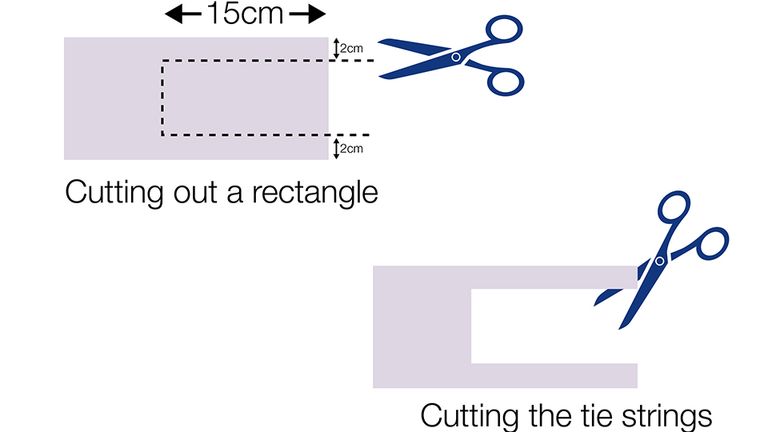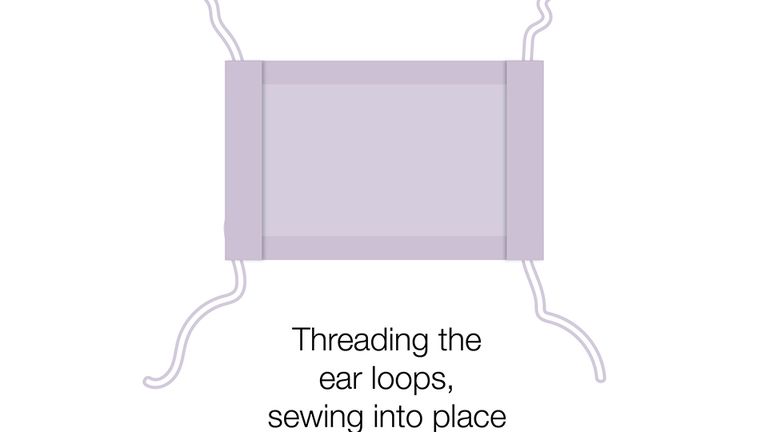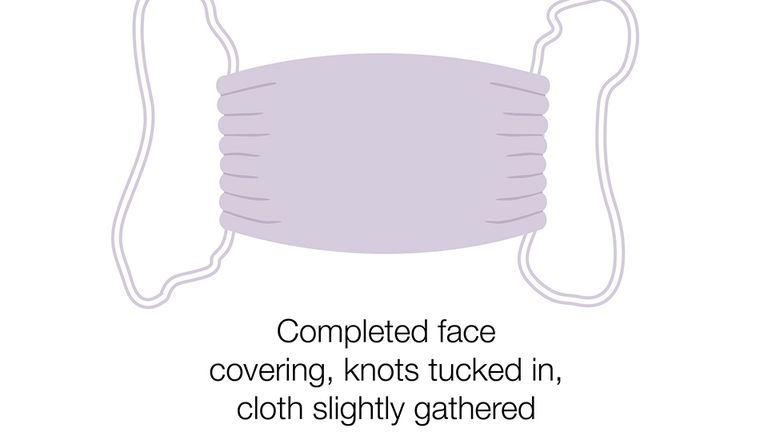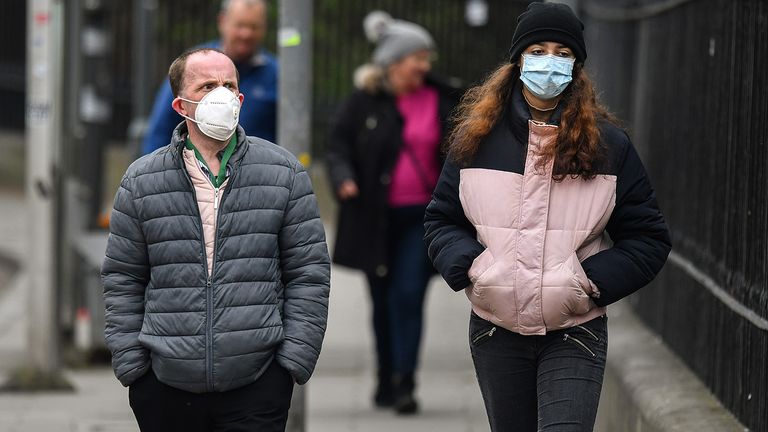Britons are now being advised to wear face masks on public transport and in some shops where social distancing is not possible.
After weeks of insisting that there was little scientific evidence to suggest that such coverings were effective in preventing the spread of coronavirus, the government has changed its advice.
The updated guidance has been published in a 50-page blueprint for lifting the UK out of lockdown, expanding on a speech from Prime Minister Boris Johnson on Sunday night that many had said was confusing.
Details included in "Our Plan to Rebuild: The UK Government's COVID-19 recovery strategy" suggest people should wear face-coverings in enclosed spaces where social distancing is not always possible and where they come into contact with others who they do not normally meet, such as on public transport or in some shops.
Scottish First Minister Nicola Sturgeon had recommended face coverings be worn in "enclosed spaces" last month, contradicting the message consistently put forward at the daily Downing Street news briefings.
Advertisement
Transport For London had also already advised those still reliant on buses and the Tube network to wear face masks, although the government is urging people who need to go to work to walk or cycle where possible.
So as not to place added pressure on supplies needed by NHS staff and care home workers, the government has issued instructions for making face masks at home, using elastic bands and cotton fabric or an old T-shirt.
More from Covid-19
Here's how to make one with an old T-shirt:
First, cut a straight line across the width of the T-shirt (front and back) approximately 20cm from the bottom.
From a point 2cm below the top right-hand corner of the fabric, make a 15cm horizontal cut through both sides of the fabric that is parallel to the top of the rectangle.
Cut down towards the bottom of the fabric until you reach approximately 2cm above the bottom edge. From here, make another 15cm cut that runs parallel to the bottom of the fabric to make a rectangle that can be discarded.

To make the ties, cut open the edge of the two long strips of fabric.
Unfold the main piece of fabric and place over the mouth and the nose. The four strips act as ties to hold the cloth face covering in place and should be tied behind the head and around the neck.

Here's how to make one with cotton fabric and elastic bands:
You will need two 25cm x 25cm squares of cotton fabric, two 20cm pieces of elastic (or string or cloth strips), scissors, and needle and thread.
First, cut out two 25cm x 25cm squares of cotton fabric and stack the two squares on top of each other.
Fold over one side by 3/4 cm and hem, then repeat on the opposite side.
Make two channels by folding the double layer of fabric over 1.5cm along each side and stitching this down.

Run a 20cm length of elastic (or string or cloth strip) through the wider hem on each side of the covering – these will be the ear loops.
Use a large needle to thread it through, before tying the ends tightly.

If you only have string, you can make the ties longer and tie the covering behind your head.
Then you need to gently pull on the elastic so that the knots are tucked inside the hem.
Gather the sides of the covering on the elastic and adjust so the covering fits your face, and then securely stitch the elastic in place to keep it from slipping. These elastic loops fit over the ears.

Public Health England says people could also use a scarf or bandana as an alternative to a homemade mask.
In any case, people should wash their hands or use hand sanitiser before putting them on and taking them off.
Additional advice includes:
- Avoid touching your eyes, nose or mouth at all times.
- Store used face coverings in a plastic bag until they can be washed.
- Do not touch the front of the covering or the part that has been in contact with your mouth and nose.
- Wash the covering regularly – it can go in with other laundry, using normal detergent.

Why is the government now advising people to wear face coverings?
The change in advice follows "careful consideration of the latest scientific evidence from the Scientific Advisory Group for Emergencies (SAGE)", the Department of Health (DoH) said.
It said face coverings can help "reduce the risk of transmission" of coronavirus "in some circumstances".
They do not need to be worn outdoors, or while exercising, in schools, or in workplaces such as offices and retail, according to the DoH.
They also do not need to be worn by people who may find them difficult to wear, such as children aged under two, primary school children who cannot use them without assistance, or by people who may have problems breathing while wearing a face covering.
[contf]
[contfnew]

sky news
[contfnewc]
[contfnewc]





